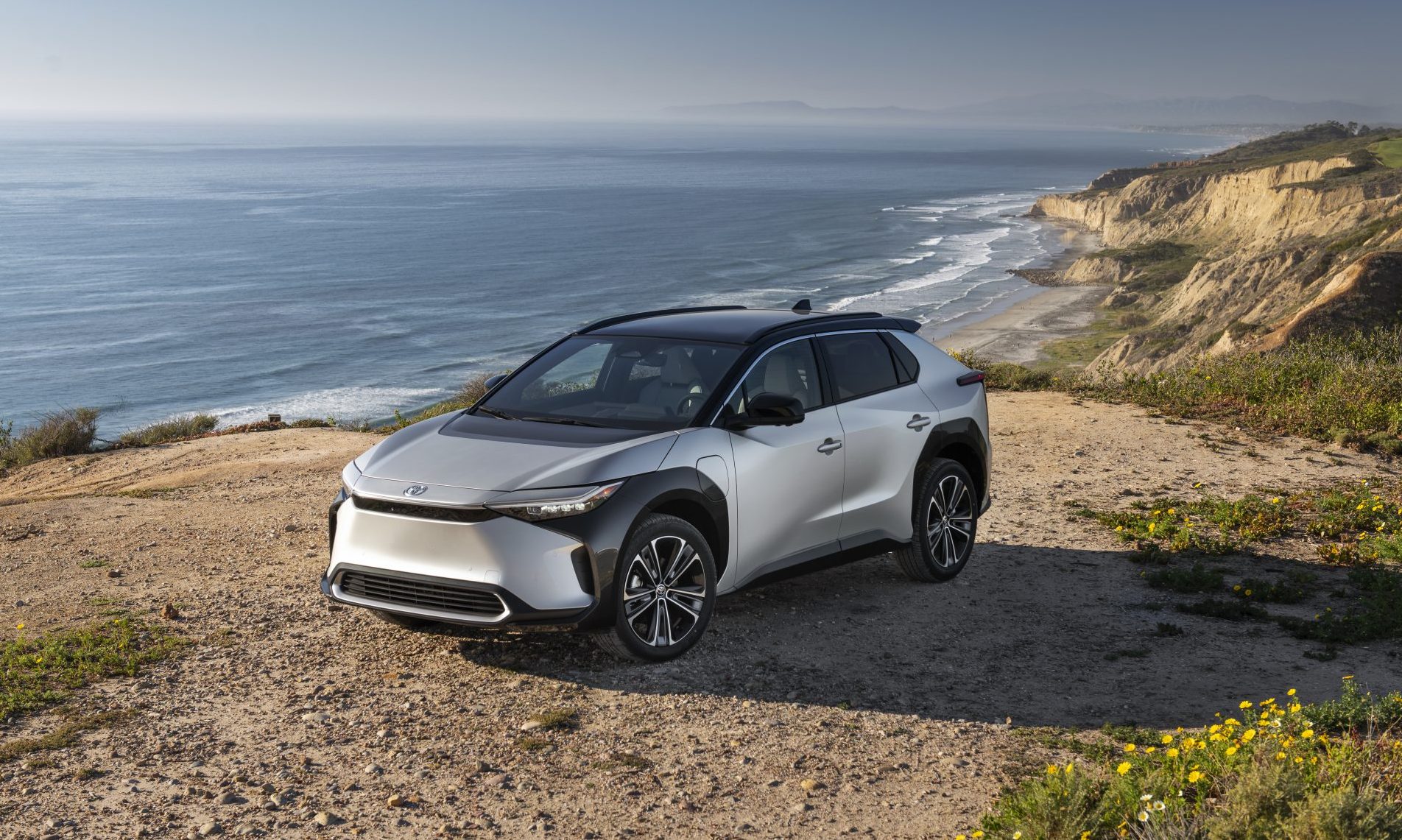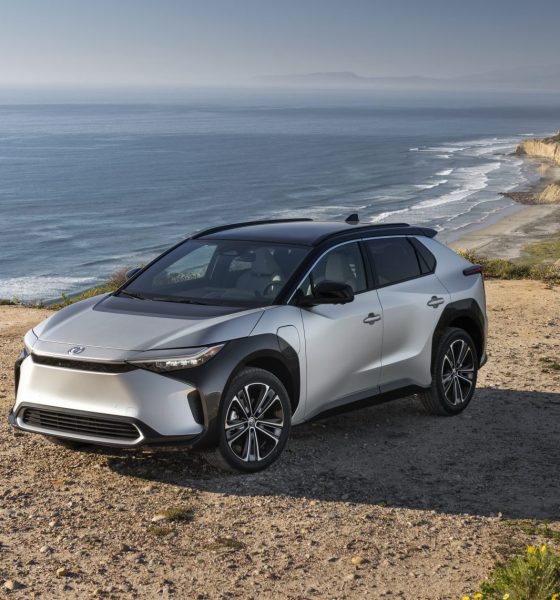Toyota has had a long history of speaking out against an all-out transition to electric vehicles (EVs), continually pointing to hydrogen technology and continued gas vehicle production as important pieces of the puzzle. In a recent statement, a Toyota chairman referenced a new project for the automaker, and while he didn’t share details, he did emphasize how hybrids and internal combustion engines (ICE) “still play a role” in reaching carbon neutrality goals.
After Toyota boosted its 2025 battery-electric vehicle (BEV) production forecast in November, the company later that month said that it expects to produce more hydrogen cars than its recently announced solid-state EVs by 2030. On Friday, former Toyota CEO and current chairman Akio Toyoda said that the automaker has gained approval from executives to start a project to “promote engine development anew,” with messaging on high-performance ICEs expected to play a big role for the company in 2024, according to Automotive News.
“There is still a role for engines as a practical means of achieving carbon neutrality,” Toyoda said on Friday during the Tokyo Auto Salon conference. “So, let us refine engine technology.”
Toyoda says that he was given approval from current Toyota CEO Koji Sato and other members of the executive body to follow through on the project. While he didn’t provide any further details on the initiative, he reiterated themes around BEV adoption that he has echoed through much of his career, highlighting hydrogen and the need for a smooth social shift to electrification.
“Battery electric vehicles do not represent the only way to achieve carbon neutrality,” Toyoda added. “Should we not all have enthusiasm for cars as we take on the challenge.”
Through advanced combustion engine development, Toyota still hopes to help fight carbon emissions while also helping to preserve jobs for those currently in ICE manufacturing, according to Toyoda. He said that many of the roughly 5.5 million people in Japan’s important automotive sector currently rely on part production for ICE vehicles.
“These people support Japan and have the skills to make the Japan of tomorrow strong. We must never lose these people,” Toyoda said. “To all those who have made engines up until now, let us continue to make engines… I will never let all the work you have all done so far go to waste.”
Toyota has had a fairly long history of vouching for a gradual transition to battery electric tech, and generally holding off on an “EV-only” approach to electrification—despite being the hybrid pioneer that developed the Prius.
In May, Toyota sent a document to dealerships highlighting what the company considered three major barriers to widespread BEV adoption. Toyota wrote that the first major barrier was the impossible demand for critical minerals needed to make EV batteries, while the lack of charging infrastructure and affordability were the other two.
The document elicited a response from Tesla Vice President of Investor Relations Martin Viecha, who debunked the claims, saying, “How is this a real document?”
1. Less mining/extraction is needed in renewable economy due to no fossil fuel extraction
2. Your car is fully charged every morning, so fast charging needs are limited, yet widely available
3. Model 3 costs ~$37.5k post EV creditHow is this a real document?
— Martin Viecha (@MartinViecha) May 30, 2023
In 2021, a New York Times report also depicted how a Toyota executive had lobbied against an aggressive electrification strategy in a meeting with U.S. congressional staff, as part of larger, worldwide efforts to reject stricter regulations in the U.S. the European Union, the United Kingdom, Japan, India, and Australia, among others still. The automaker’s slow-paced approach to electrification was also defended by the White House last year.
What are your thoughts? Let me know at zach@teslarati.com, find me on X at @zacharyvisconti, or send your tips to us at tips@teslarati.com.

Elon Musk
Starlink passes 9 million active customers just weeks after hitting 8 million
The milestone highlights the accelerating growth of Starlink, which has now been adding over 20,000 new users per day.

SpaceX’s Starlink satellite internet service has continued its rapid global expansion, surpassing 9 million active customers just weeks after crossing the 8 million mark.
The milestone highlights the accelerating growth of Starlink, which has now been adding over 20,000 new users per day.
9 million customers
In a post on X, SpaceX stated that Starlink now serves over 9 million active users across 155 countries, territories, and markets. The company reached 8 million customers in early November, meaning it added roughly 1 million subscribers in under seven weeks, or about 21,275 new users on average per day.
“Starlink is connecting more than 9M active customers with high-speed internet across 155 countries, territories, and many other markets,” Starlink wrote in a post on its official X account. SpaceX President Gwynne Shotwell also celebrated the milestone on X. “A huge thank you to all of our customers and congrats to the Starlink team for such an incredible product,” she wrote.
That growth rate reflects both rising demand for broadband in underserved regions and Starlink’s expanding satellite constellation, which now includes more than 9,000 low-Earth-orbit satellites designed to deliver high-speed, low-latency internet worldwide.
Starlink’s momentum
Starlink’s momentum has been building up. SpaceX reported 4.6 million Starlink customers in December 2024, followed by 7 million by August 2025, and 8 million customers in November. Independent data also suggests Starlink usage is rising sharply, with Cloudflare reporting that global web traffic from Starlink users more than doubled in 2025, as noted in an Insider report.
Starlink’s momentum is increasingly tied to SpaceX’s broader financial outlook. Elon Musk has said the satellite network is “by far” the company’s largest revenue driver, and reports suggest SpaceX may be positioning itself for an initial public offering as soon as next year, with valuations estimated as high as $1.5 trillion. Musk has also suggested in the past that Starlink could have its own IPO in the future.
News
NVIDIA Director of Robotics: Tesla FSD v14 is the first AI to pass the “Physical Turing Test”
After testing FSD v14, Fan stated that his experience with FSD felt magical at first, but it soon started to feel like a routine.

NVIDIA Director of Robotics Jim Fan has praised Tesla’s Full Self-Driving (Supervised) v14 as the first AI to pass what he described as a “Physical Turing Test.”
After testing FSD v14, Fan stated that his experience with FSD felt magical at first, but it soon started to feel like a routine. And just like smartphones today, removing it now would “actively hurt.”
Jim Fan’s hands-on FSD v14 impressions
Fan, a leading researcher in embodied AI who is currently solving Physical AI at NVIDIA and spearheading the company’s Project GR00T initiative, noted that he actually was late to the Tesla game. He was, however, one of the first to try out FSD v14.
“I was very late to own a Tesla but among the earliest to try out FSD v14. It’s perhaps the first time I experience an AI that passes the Physical Turing Test: after a long day at work, you press a button, lay back, and couldn’t tell if a neural net or a human drove you home,” Fan wrote in a post on X.
Fan added: “Despite knowing exactly how robot learning works, I still find it magical watching the steering wheel turn by itself. First it feels surreal, next it becomes routine. Then, like the smartphone, taking it away actively hurts. This is how humanity gets rewired and glued to god-like technologies.”
The Physical Turing Test
The original Turing Test was conceived by Alan Turing in 1950, and it was aimed at determining if a machine could exhibit behavior that is equivalent to or indistinguishable from a human. By focusing on text-based conversations, the original Turing Test set a high bar for natural language processing and machine learning.
This test has been passed by today’s large language models. However, the capability to converse in a humanlike manner is a completely different challenge from performing real-world problem-solving or physical interactions. Thus, Fan introduced the Physical Turing Test, which challenges AI systems to demonstrate intelligence through physical actions.
Based on Fan’s comments, Tesla has demonstrated these intelligent physical actions with FSD v14. Elon Musk agreed with the NVIDIA executive, stating in a post on X that with FSD v14, “you can sense the sentience maturing.” Musk also praised Tesla AI, calling it the best “real-world AI” today.
News
Tesla AI team burns the Christmas midnight oil by releasing FSD v14.2.2.1
The update was released just a day after FSD v14.2.2 started rolling out to customers.

Tesla is burning the midnight oil this Christmas, with the Tesla AI team quietly rolling out Full Self-Driving (Supervised) v14.2.2.1 just a day after FSD v14.2.2 started rolling out to customers.
Tesla owner shares insights on FSD v14.2.2.1
Longtime Tesla owner and FSD tester @BLKMDL3 shared some insights following several drives with FSD v14.2.2.1 in rainy Los Angeles conditions with standing water and faded lane lines. He reported zero steering hesitation or stutter, confident lane changes, and maneuvers executed with precision that evoked the performance of Tesla’s driverless Robotaxis in Austin.
Parking performance impressed, with most spots nailed perfectly, including tight, sharp turns, in single attempts without shaky steering. One minor offset happened only due to another vehicle that was parked over the line, which FSD accommodated by a few extra inches. In rain that typically erases road markings, FSD visualized lanes and turn lines better than humans, positioning itself flawlessly when entering new streets as well.
“Took it up a dark, wet, and twisty canyon road up and down the hill tonight and it went very well as to be expected. Stayed centered in the lane, kept speed well and gives a confidence inspiring steering feel where it handles these curvy roads better than the majority of human drivers,” the Tesla owner wrote in a post on X.
Tesla’s FSD v14.2.2 update
Just a day before FSD v14.2.2.1’s release, Tesla rolled out FSD v14.2.2, which was focused on smoother real-world performance, better obstacle awareness, and precise end-of-trip routing. According to the update’s release notes, FSD v14.2.2 upgrades the vision encoder neural network with higher resolution features, enhancing detection of emergency vehicles, road obstacles, and human gestures.
New Arrival Options also allowed users to select preferred drop-off styles, such as Parking Lot, Street, Driveway, Parking Garage, or Curbside, with the navigation pin automatically adjusting to the ideal spot. Other refinements include pulling over for emergency vehicles, real-time vision-based detours for blocked roads, improved gate and debris handling, and Speed Profiles for customized driving styles.










